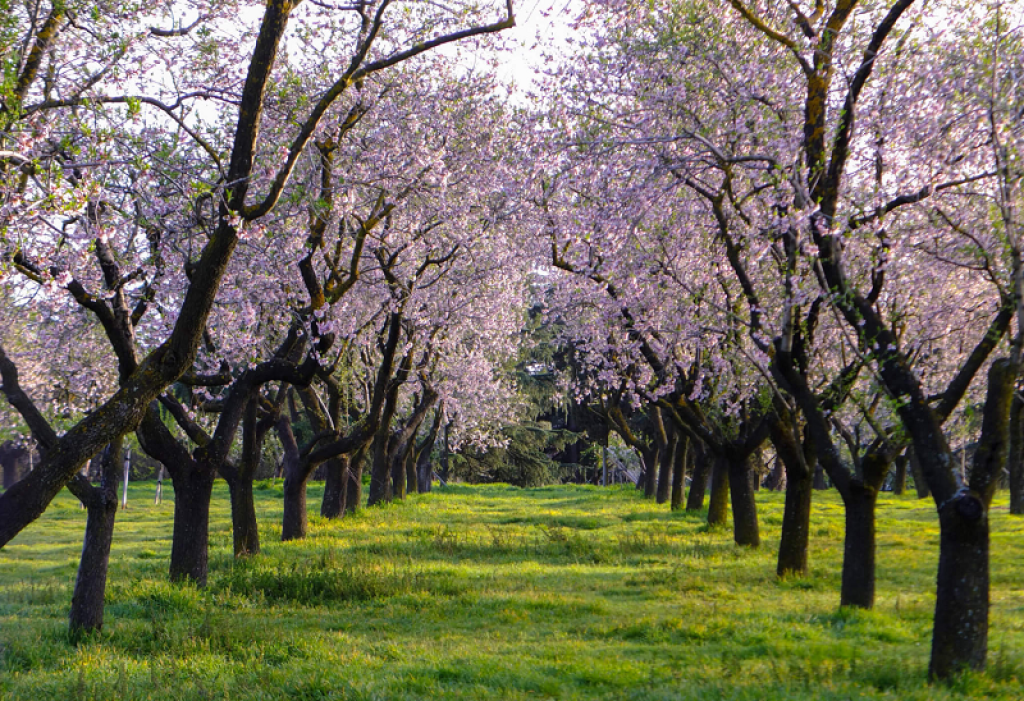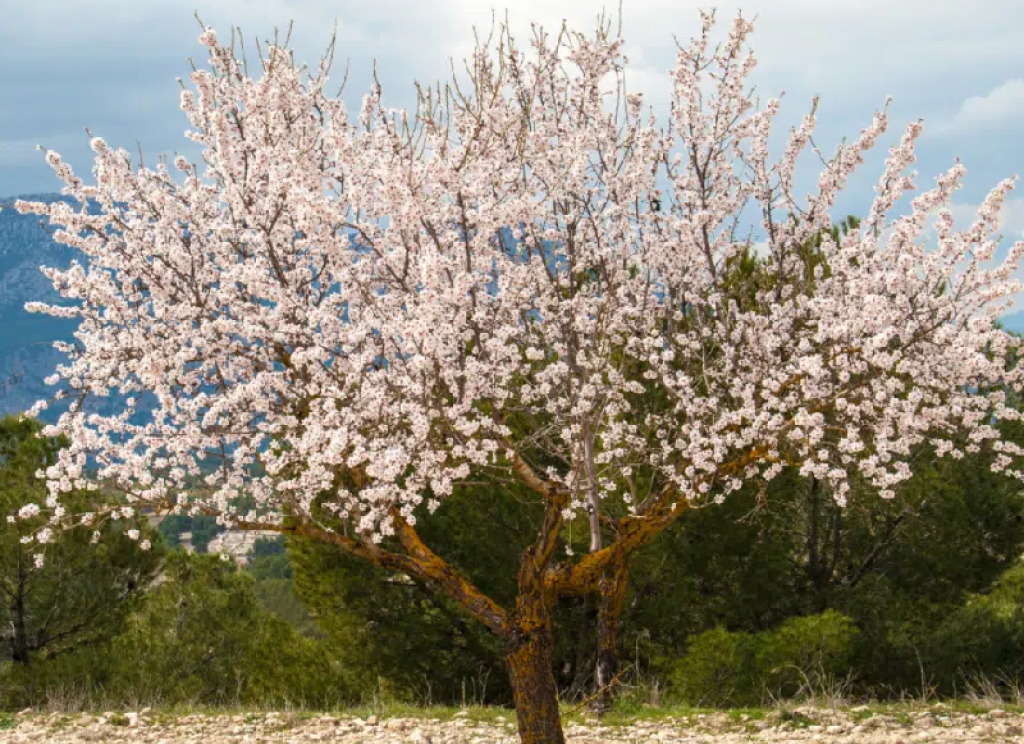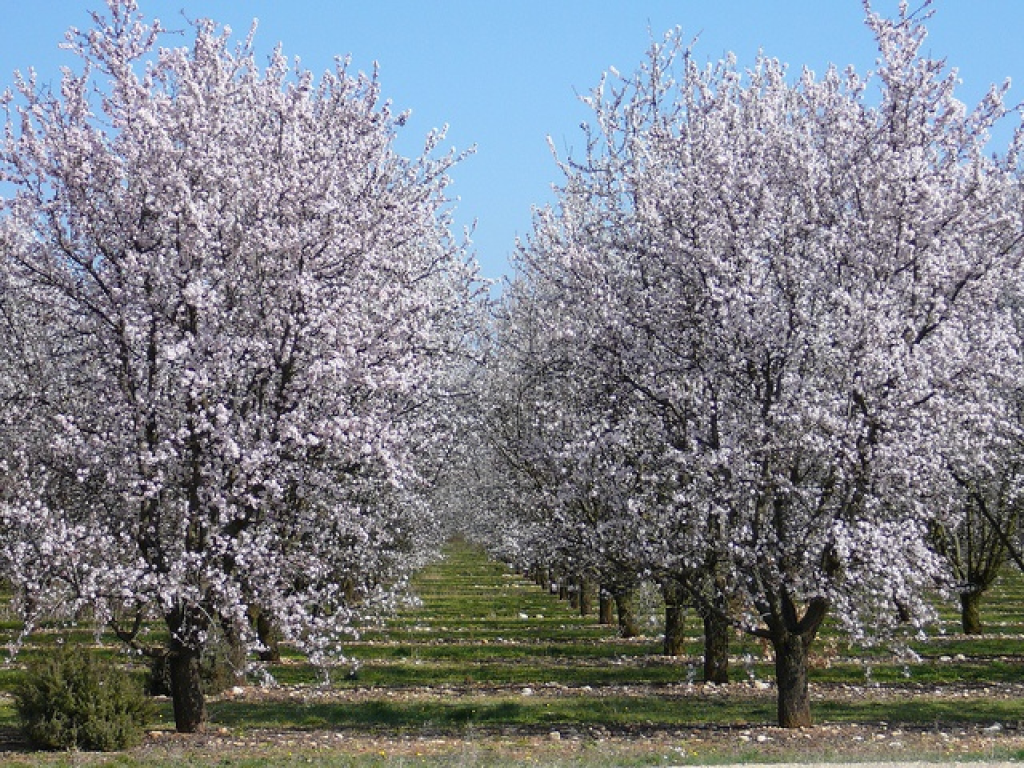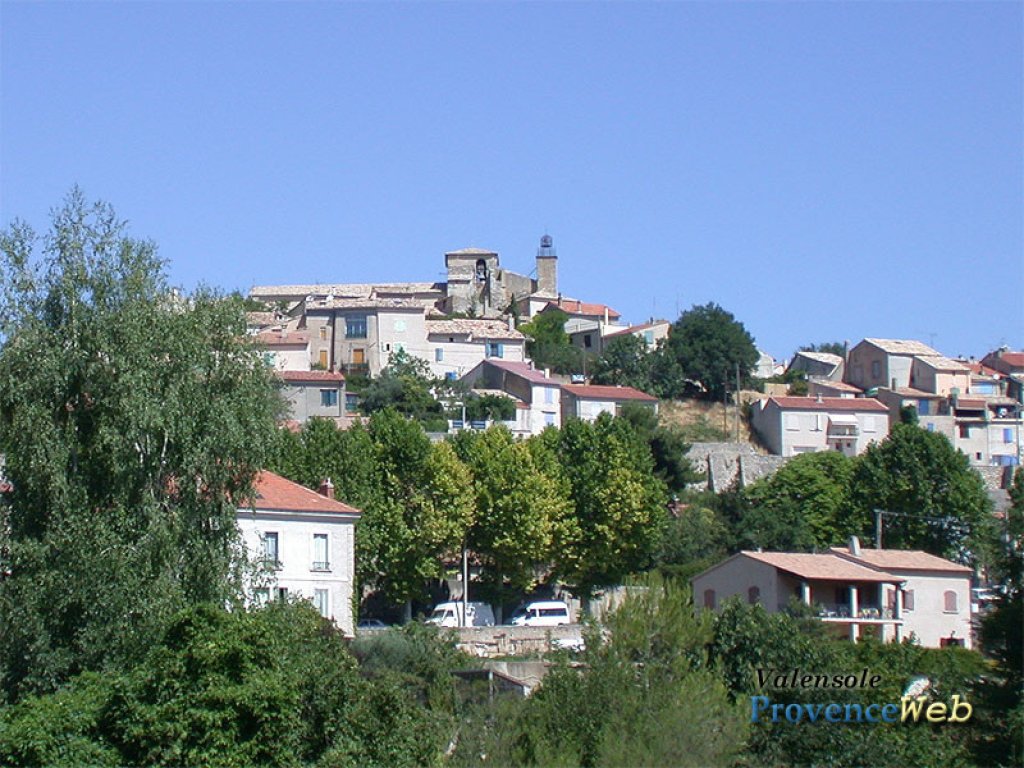From the very start of spring, Provence offers a magnificent spectacle of almond trees in bloom. The branches of these trees, among the first to bloom at the end of winter, are adorned with white flowers with pinkish highlights, heralding the arrival of spring. Their fragile, ephemeral beauty has inspired many artists, including the famous painter Vincent Van Gogh. Get your camera ready and set off to discover the most beautiful spots to admire and immortalize these enchanting landscapes. We'll share some superb photos of almond trees in bloom with you on this page. Almonds are an increasingly popular fruit with the French, and are perfect for eating at the office.

Photos, images and information about Almond trees in bloom
Special features of the almond tree
The almond tree is remarkable for its ability to adapt to difficult conditions. This deciduous tree, which can reach heights of 10 to 15 meters, thrives on dolomitic soils that are dry, stony and low in organic matter. It needs light, sun and dry air to thrive.
It flowers particularly early, making it the first fruit tree to bloom. The blossoms generally appear in fresh pink or pure white pompons, even before the leaves appear. However, its flowers are sensitive to frost, so special care is needed when planting.
The almond tree belongs to the Rosaceae family and its scientific name is Prunus dulcis. Known for its longevity, it can live for over 100 years.
The almond tree's flowering cycle
The almond tree's flowering cycle generally begins at the end of winter, in February or March. The white or pink flowers appear before the leaves, giving the tree a particularly aesthetic appearance. During this period, the almond tree reveals all its splendor, for about three weeks. It's after this early flowering that the leaves start to appear and the first fruits begin to form. The fruit, the almond, then ripens throughout the summer, and is generally harvested in September. It should be noted that the precise date of flowering can vary according to the variety of almond and climatic conditions.

When is the flowering season in Provence? What's the right season?
To observe the almond blossoms in Provence, it's best to plan your visit between February and March. That's when the buds open, giving way to a delicate bloom of white and pink flowers. However, the exact date of flowering can vary according to the year's climatic conditions. In a mild winter, for example, flowering can start as early as the end of January. Don't forget that flowering only lasts a few weeks, so it's best to plan your visit accordingly so you don't miss out on this enchanting natural spectacle.
Where to see almond trees in bloom in Provence?
Provence is dotted with many places to admire almond trees in bloom. The Plateau de Valensole, famous for its lavender fields, also offers an idyllic setting for observing these trees in bloom. The Durance valley, stretching between the Luberon and the Alps, is another must-see. You can explore towns like Manosque, Pertuis and Cavaillon for this experience.
The Verger conservatoire d'amandiers in Apt, with over forty varieties of almond trees, is also a must-see. Finally, don't forget the Aix countryside, where almond trees line the roads, offering a magnificent visual spectacle.
What color is the almond blossom? Pink or white?
The almond blossom in Provence has a delicate hue ranging from pure white to pale pink. These shades can vary according to the variety of almond tree. However, the flowers are generally characterized by their great sensitivity to cold. They appear even before the leaves appear, giving the tree a magnificent floral display. The petals, five in number or a multiple of five, give the flower a pentameric appearance. Its slightly pinkish color on a white background evokes the softness and tenderness of springtime landscapes in Provence.
Shades of pink in almond blossoms
Almond blossoms reveal shades of pink that vary according to variety and stage of bloom. When they first open, they are bright pink, gradually fading to pastel shades and pinkish white. Some rarer varieties may have deeper pink flowers.
These gradations of color, combined with the changing light as the hours and days go by, create an ever-changing visual spectacle. Shades of pink can also be influenced by local climate and soil type, adding further complexity to this natural palette.
Bright pink: visible at blooming, a sign of youth and vitality.
Pastel pink: flowers take on this hue mid-flowering, adding a touch of softness.
Pinkish white: the final color before the petals fall, symbolizing purity and delicacy.
Appreciating the variations in these hues requires careful observation of almond trees throughout their blossoming period.
The almond tree and art: focus on Van Gogh
Vincent Van Gogh, world-renowned painter, often incorporated the almond tree into his works. One of his most famous paintings, "Almond Tree in Bloom", was produced in 1890.
This painting, an oil on canvas measuring 73.5 × 92 cm, was painted in Saint-Rémy-de-Provence in February, when the almond trees begin to blossom. The composition of the work reflects the influence of Japanese art on Van Gogh, with the positioning of the tree and the precision of the lines.
The painting was a tribute to his brother Theo's son, Vincent Willem, of whom he was godfather. For Van Gogh, the flowers of the almond tree symbolized renewal and hope, corresponding to the birth of his nephew.
Van Gogh's admiration for almond trees in bloom went beyond their visual beauty. In painting this tree, he was also celebrating its resilience, capable of flowering even in difficult conditions, a theme that resonates with his own life.
The most beautiful almond fields to photograph
In Provence, Cucuron is a prime destination for photographing almond trees in bloom, with the Luberon mountains as a backdrop. Another place of interest is the Verger conservatoire d'amandiers de Provence-Alpes-Côte d'Azur, which boasts 40 varieties of almond trees. The Alpilles and Ventoux regions also offer magnificent almond blossom landscapes. Finally, the Plateau de Valensole, in the heart of Haute-Provence, offers a contrasting spectacle, with almond trees in bloom against the snow-capped peaks of the Alps.
Conservatory almond orchard
Alpilles
Ventoux
Plateau de Valensole
Each of these sites has a unique setting and distinct lighting conditions, offering many opportunities to capture unique images. We recommend that you respect the sites and do not enter the fields to avoid damaging the plantations.

Observing branches and leaves before flowering
Observing an almond tree's branches and leaves before flowering is a crucial step in understanding the tree's state of health and anticipating flowering. The branches of a healthy almond tree are sturdy and well-spaced, allowing good light and air circulation.
Leaves, on the other hand, only appear after flowering. Nevertheless, it's possible to spot the latent buds that will give rise to the leaves. These buds are generally small and green in color.
Lichens can also be seen on the branches, indicating good air quality.
Almond varieties and colors
The colors of almond blossoms vary according to variety. The 'Demi-tendre d'Apt' variety, very popular in Provence, produces beautiful white flowers. Other varieties, such as 'Verdale' or 'Princesse', have pinkish-white flowers.
There are also less common varieties with more pronounced flower hues. For example, 'Ferragnès' and 'Lauranne' have slightly reddish flowers.
Demi-tendre d'Apt': White flowers.
Verdale' and 'Princesse': pinkish-white flowers.
Ferragnès' and 'Lauranne': Reddish flowers.
It's also important to note that almond trees can be classified into two main types according to the taste of their almonds: amara (bitter) and dulcis (sweet). This distinction has no influence on the color of the flowers, but can be a criterion for planting.
The cultivation and history of the almond tree in Provence
In Provence, the almond tree finds a favorable environment for its development thanks to its Mediterranean climate, characterized by mild winters and hot, dry summers. It thrives on the poor, well-drained soils typical of the region. Historically, Provence was a major almond-growing region until the mid-20th century, when almond production declined.
In recent years, however, there has been a resurgence of interest in almond cultivation, driven in particular by growers' desire to diversify their crops and meet growing consumer demand for local and organic produce.
Growing almonds requires special attention, particularly with regard to irrigation, the choice of varieties suited to the terroir, and pest and disease control. Pruning, grafting and harvesting techniques are also key factors in producing quality almonds.
Several varieties of almond are grown in Provence, including Lauranne and Ferragnès, renowned for the quality of their almonds.
The symbolism of almond trees in bloom
The almond tree in bloom carries a strong symbolism. As the first tree to bloom in spring, it embodies the renewal of life. Its flowers, radiant with purity and delicacy, evoke gentleness and tenderness. They are also a symbol of hope and elegance.
In the language of flowers, the almond tree is associated with absent-mindedness, illustrated by its early flowering, often exposed to late-winter frost. It is also seen as a sign of forgiveness for clumsiness.
In Greek mythology, the almond tree is associated with fertility and the goddess Agdistis. It is often represented as a symbol of love.
In Jewish tradition, the almond tree is a symbol of hard work and is celebrated on the Feast of Trees.
In ancient Egypt, the almond tree was a symbol of resurrection and rebirth, its trees often being planted near tombs to ensure life after death.
Tips for photographing almond trees in bloom
To create memorable photos of almond trees in bloom, a few tips may prove useful.
Choose the right moment: morning and evening often offer the best light, with soft hues and balanced contrast.
Use depth of field: this allows you to highlight the flowers while blurring the background. Working with a wide aperture (small f-number) will help you achieve this effect.
Compose your image: position your subjects according to the rule of thirds for a harmonious result. Don't be afraid to play with perspective, by shooting from the ground, in low-angle or bird's-eye view.
Incorporate elements of interest: a winding path, an old barn, a mountain in the background... can add context and interest to your photo.
Prepare your equipment: a tripod can help stabilize your camera for sharper photos. Macro lenses are ideal for close-ups of flowers.
Choose manual mode: this lets you control all the parameters (aperture, shutter speed, ISO) to get the image you want.
Add a personal touch: your unique view of the world is your best asset. Experiment, be creative and don't be afraid to make mistakes!
How and where to plant an almond tree? Planting advice
To plant an almond tree, choose a sunny spot sheltered from the wind, as the tree needs light and warmth. Ideally, almond trees are planted in autumn, but they can also be planted between March and April, when the soil warms up and the roots can develop properly.
Start by digging a square hole about 60 cm square.
Loosen the bottom of the hole with a spade.
If the soil is heavy, place a bed of gravel at the bottom of the hole, then cover it with a layer of sand to ensure good drainage.
Place the almond tree in the hole, ensuring that the grafting point remains on the surface.
Fill in the hole and water thoroughly.
If you plan to plant several almond trees, remember to maintain a distance of 6 to 7 meters between each tree. This distance gives each almond tree enough room to grow, and also encourages pollination between trees.




